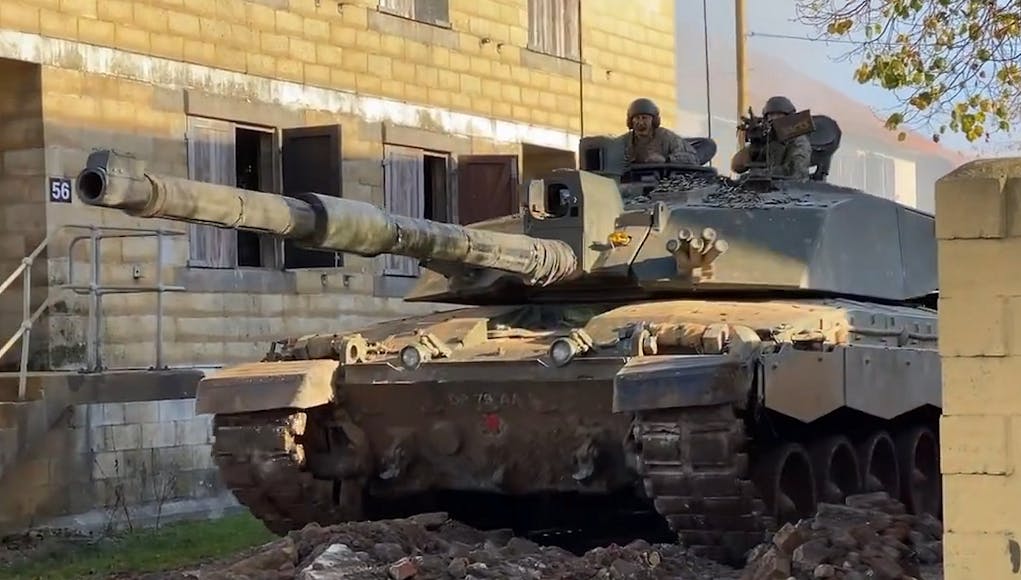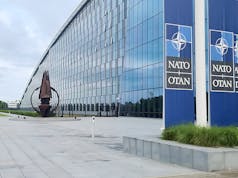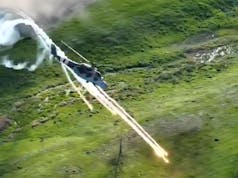According to a recent update shared on social media, Challenger 2 tank crews from the British Army are currently engaging in rigorous training on Salisbury Plain, learning the complexities of urban warfare.
The training is designed to enhance the skills of tank operators in urban combat scenarios, which present unique challenges compared to more conventional battlefield environments.
The exercise allows crews to hone their manoeuvrability and combat readiness in confined spaces, as urban environments often feature narrow streets, buildings, and unpredictable terrains.
Challenger 2 tank crews moving through the complex urban environment on an exercise on Salisbury Plain #armyjobs #armoured #robustagilecapable #britisharmy #tanks #army #british #defence #military #cavalry pic.twitter.com/911ECcro9e
— Royal Armoured Corps (@RoyalArmdCorps) September 12, 2024
This type of training is essential to ensuring that British Army tank units remain “robust, agile, and capable”, as highlighted in the Army’s tweet, and are able to respond effectively to diverse combat situations.
Salisbury Plain Training Area (SPTA) is a vast military training site, the same size as the Isle of Wight, covering a ninth of Wiltshire. Stretching from Warminster and Westbury in the west to Tidworth and Perham Down in the east, the area includes the village of Imber, evacuated in 1943 and still uninhabited.
Despite its military use, the site has preserved a significant archaeological landscape dating back 6,000 years, with around 2,300 monuments, 550 of which are legally protected. The area is renowned for its dense concentration of ancient long and round barrows, offering a unique historical value.














Um sorry, that wasn’t a charge! more like a gentle stroll whilst firing a machine gun
Do you reckon that’s a “sounds effect” machine gun? LOL.
👌
Use the coaxial. The crew would last 10 seconds with their torsos hanging out of the hatch.
Tank Commander (TC) needs a lot of Situational Awareness (SA) in urban areas. Its a tough judgement call. Of course you need Infantry going ahead of the tanks to clear threats to tanks. Still a TC will want that enhanced SA. Israeli TCs are often head out especially in urban areas and they hav etons of experience.
Can’t have 20 plus feet of barrel swinging around in an urban fight, use the Loaders GPMG to react if necessary. Situational awareness is most important to as GM says, it’s a tough call to be heads out.
No infantry ,ensuring buildings clear especially roofs , open hatch juicy target for grenade drop .
Doesn’t seem wise to have your head out. Juicy target.
Depends on the situation. A lot of TC’s like to have their heads out because it improves their situational awareness. The GPMG is also a lot more responsive than the coaxial so in close in situations it’s more useful than the coax.
OT. Seen NDs latest ORBAT set up on X?
I was counting up what doesn’t exist in 1 Divs 2 Lt Mech Bdes then scrolled across to 3 Div to find 7 had been moved into it, so the other Lt Mech was totally new.
1 Div also has its own Art Bde with 2 gun Regs AND 2 HIMAARS Regs in it!
3 UK has 4 Brigades.
Apparently this is achievable in the 73K Total by reducing HQs ( thought that had been done a few times already ) while reducing the size of other units to redistribute.
Where do we sign?!
Some of the posters on there gave it crit, not in that so many of the formations don’t exist, but that the 2 Divs need to be 4!
Over the years many static army HQs have been down-sized, merged or eliminated. Not so sure about HQs in the Field Force though.
Me neither. Cannot think of any offhand.
Seen it, but not engaged with it. I’m skeptical.
The Israeli method of conducting Tank Warfare is to have the Commander/Commander’s Head out of the Turret to aid situational awareness, they use an Armoured Umbrella but the risks and casualty rates are obviously higher.
They are adding 360º cameras to the tanks to prevent that.
Western Tankers have always fought head out.